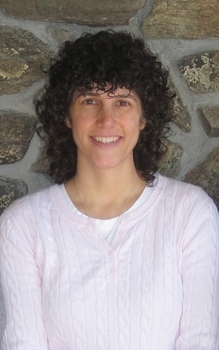Michelle: Welcome everyone to this course on alternative and augmentative communication. This is part of a series of courses hoping to prepare interested parties in getting ready for the Assistive Technology Professional (ATP) examination through RESNA. You might have already watched some of these. Wherever you are in this series, we welcome you and hope that this information is helpful for you not only in preparing for this exam, but hopefully helpful in general with what you are doing in your job and for the clients that you are serving.
We are going to go over some definitions. We are going to revisit the HAAT model that we discussed during our assessment module as it applies to augmentative communication. The HAAT model is something that was proposed in the assistive technology text from Cook and Hussey, and it used as a framework within the ATP examination. Under the HAAT model, we will talk about the human technology interface, processor output, and physical construction, which includes topics such as mounting and interfacing.
The ATP Certification
The Assistive Technology Professional, or ATP, certification is offered through RESNA. RESNA is the Rehabilitation Engineering and Assistive Technology Society of North America. It is the largest interdisciplinary professional organization dedicated to assistive technology. This is one of the certifications that they offer. The ATP is designed to demonstrate a basic level of competence in assistive technology. Currently, over 4,000 people hold that certification. This series of courses includes information to help prepare the candidate for this exam. The candidate also has to fulfill specific prerequisites before taking the exam. For occupational therapists particularly, 1,000 hours of work experience is required over a six year period of time. There is further information at the web link listed above that goes through all the very specific prerequisites and other requirements for this certification.
Definitions
Communication
Communication can encompass a number of specific sub-definitions.
- Expressive
- Receptive
- Verbal
- Non-verbal
- Written
Expressive. This is what we use to speak to someone else, to express our thoughts.
Receptive. Receptive is understanding what someone is saying to you.
Verbal vs. non-verbal. We may communicate verbally, but a great deal of our communication is non-verbal. That is often a challenge when you are doing a webinar.
Written. We also communicate in written format.
All of these, verbal, non-verbal, and written, are part of expressive and receptive communication.
Augmentative and Alternative Communication (AAC)
AAC, as defined by the American Speech-Language-Hearing Association, is augmentative and alternative communication. It includes all forms of communication, other than oral speech, that are used to express thoughts, needs, wants, and ideas. It is providing communication through another means other than typical oral speech, and is used for a number of purposes.
All those purposes of communication including expressing what is on our mind, letting others know our needs and wants, and sharing ideas. Augmented communication supplements existing speech. This might be someone who is difficult to understand but does have some oral speech. The augmentative portion of that is filling in, or augmenting what is missing. Alternative communication replaces speech that is not functional. This might be someone who is completely non-verbal or extremely difficult to understand.
Different practitioners will sometimes propose a certain percentage of verbal communication that can be understood when deciding upon a strategy. For example, if a certain percentage of communication can be understood, this person might require augmentation versus alternative communication. This varies a bit clinician to clinician. A common question during assessment is what percentage of this client's speech are you able to understand? This question is usually posed to people who know the client well, say family members or other caregivers.
AAC can be divided into several categories. We have unaided communication systems and aided communication systems.
